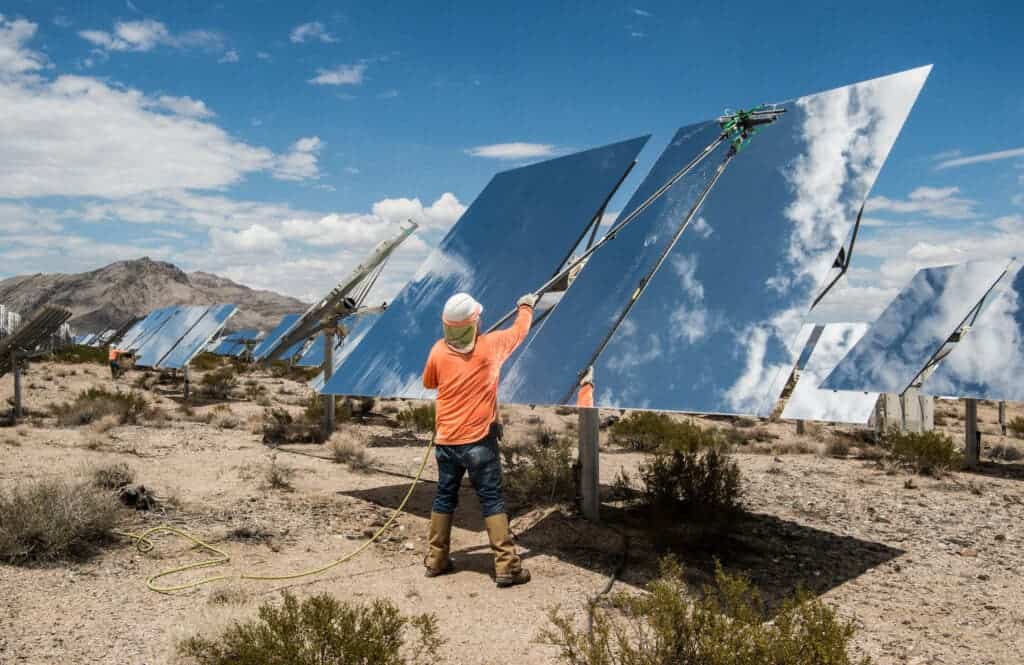The world can still avoid the worst consequences of the climate crisis but only through an urgent transition to a low-carbon economy and society, climate scientists have said in a new IPCC report. Scientists provided a roadmap to show how emissions can be quickly reduced to limit global warming to below 1.5ºC, the Paris Agreement targets.

This is the last of three reports of the Intergovernmental Panel on Climate Change (IPCC), which comprises leading climate scientists from around the world. Together, the three reports provide a full picture of the causes, consequences, and solutions to climate change, which has already triggered a 1.1ºC temperature rise on average.
The previous two reports focused on the physical science of climate change and the capacity of societies and ecosystems to adapt. Now, the latest report shows how the world can reduce emissions in the next three decades. The window is closing fast, scientists agreed, but it’s still possible to avoid the worst effects of the climate crisis.
“We are at a crossroads. The decisions we make now can secure a livable future. We have the tools and know-how required to limit warming,” IPCC Chair Hoesung Lee said in a statement. “I am encouraged by climate action being taken in many countries. There are policies, regulations and market instruments that are proving effective.”
Crossing the threshold
Average annual global greenhouse gas emissions were at their highest levels in human history in the 2010-2019 period, but the rate of increase has slowed, the IPCC said. However, without immediate action, the chance of limiting global warming to 1.5ºC is slipping away. Emissions would have to peak before 2025 and that’s not happening.
The IPCC looked at all national climate plans announced before the latest UN climate conference in 2021, COP26, and found that the emission projection for 2030 makes it likely that warming will exceed 1.5ºC during the 21st century. In theory, temperatures could be lowered by pulling carbon out of the atmosphere, but most techniques for this are unproven.
Emissions from fossil fuels and the industrial sector accounted for the greatest increase in emissions by 2019, the report found. That’s why leaving coal, oil, and gas in the ground will be necessary to meet the Paris Agreement targets. This will mean “major transitions” in the energy sector to substantially reduce fossil fuel use, the IPCC said.
Fossil fuel infrastructure, both existing and planned, will release enough emissions over its lifetime to exceed 1.5ºC of warming. The use of coal would have to be eliminated by 2050, while oil consumption would have to fall by 60% and natural gas by 70% compared to 2019. This means the expansion of fossil fuels must stop right now.
UN secretary-general, António Guterres, questioned governments and businesses for “lying” about being on track for 1.5ºC. “The latest IPCC report is a litany of broken climate promises. Some government & business leaders are saying one thing, but doing another. They are lying. It is time to stop burning our planet,” he said on Twitter.
The road ahead
The IPCC said low-emission and carbon-cutting technologies have never been cheaper, a good sign in terms of climate action. The cost of solar and wind energy as well as lithium batteries has been declining since 2010, for example. In fact, the economic benefit of limiting global warming to 2ºC would be higher than the cost of taking action.
Mitigation options that cost $100 or less for every ton of CO2 could reduce emissions by at least half between 2019 and 2030. These include increasing energy efficiency, renewable energy, reducing deforestation, and cutting methane emissions. However, the take-up of low-emissions technologies is still very uneven across the world, the IPCC said.
“Having the right policies, infrastructure, and technology in place to enable changes to our lifestyles and behavior can result in a 40-70% reduction in greenhouse gas emissions by 2050. This offers significant untapped potential,” IPCC scientist Priyadarshi Shukla said in a statement. “The evidence also shows that these lifestyle changes can improve our health and wellbeing.”
One of the most controversial aspects of the report refers to the removal of CO2 from the atmosphere. This can be done in several ways, from planting trees to changing farming practices. But the report argues that we’ll need more than new forests to avoid exceeding 1.5ºC – opening the door to using machines to remove CO2 directly.
This is a very contentious approach among scientists and campaigners, as the technology is still very new and expensive. But for the IPCC, removal through carbon capture and storage technology will be something necessary to counterbalance residual emissions from hard-to-abate sectors such as aviation and industrial processes.
For Ani Dasgupta, President & CEO of World Resources Institute (WRI), the world has cost-effective options available today to significantly reduce emissions in the near-term while meeting development goals.
“We must decarbonize electricity generation, industry, transport and buildings while halting and reversing deforestation. We must invest in innovation while closing the climate finance gap. We must improve agricultural practices while reducing food loss and waste and shifting to more sustainable diets. And we must stop investing in new fossil fuel infrastructure while scaling-up carbon removal,” he said.









